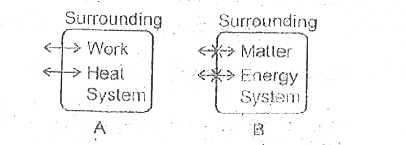The most unsysmmetrical and symmeterical systems are, respectively:
Tertragonal, Cubic
triclinic , Cubic
Rhombohedral, Hexagonal
Orthohombic, Cubic
The correct Answer is:B
To solve the question regarding the most unsymmetrical and symmetrical crystal systems, we will analyze the properties of the given crystal systems step by step.
1. Understanding Crystal Systems:
- Crystal systems are categorized based on the lengths of their edges and the angles between those edges. The seven crystal systems are cubic, tetragonal, orthorhombic, rhombohedral, monoclinic, triclinic, and hexagonal.
2. Identifying Symmetrical Systems:
- The most symmetrical crystal system is the cubic system. In this system:
- All edge lengths are equal: a=b=c
- All angles are equal and are 90 degrees: α=β=γ=90∘
3. Identifying Unsymmetrical Systems:
- The most unsymmetrical crystal system is the triclinic system. In this system:
- All edge lengths are unequal: a≠b≠c
- All angles are also unequal: α≠β≠γ
4. Comparing Other Systems:
- Tetragonal System:
- Edge lengths: a=b≠c
- Angles: α=β=γ=90∘
- This system is symmetrical but not the most symmetrical.
- Orthorhombic System:
- Edge lengths: a≠b≠c
- Angles: α=β=γ=90∘
- This system is also symmetrical but not the most symmetrical.
- Rhombohedral and Hexagonal Systems:
- Both have some equal edge lengths and angles, but they do not meet the criteria for being the most symmetrical or unsymmetrical.
5. Conclusion:
- After analyzing the properties of each crystal system, we conclude that the triclinic system is the most unsymmetrical, and the cubic system is the most symmetrical.
Final Answer:
The most unsymmetrical and symmetrical systems are, respectively: triclinic and cubic.
---
- Crystal systems are categorized based on the lengths of their edges and the angles between those edges. The seven crystal systems are cubic, tetragonal, orthorhombic, rhombohedral, monoclinic, triclinic, and hexagonal.
- The most symmetrical crystal system is the cubic system. In this system:
- All edge lengths are equal: a=b=c
- All angles are equal and are 90 degrees: α=β=γ=90∘
- The most unsymmetrical crystal system is the triclinic system. In this system:
- All edge lengths are unequal: a≠b≠c
- All angles are also unequal: α≠β≠γ
- Tetragonal System:
- Edge lengths: a=b≠c
- Angles: α=β=γ=90∘
- This system is symmetrical but not the most symmetrical.
- Orthorhombic System:
- Edge lengths: a≠b≠c
- Angles: α=β=γ=90∘
- This system is also symmetrical but not the most symmetrical.
- Rhombohedral and Hexagonal Systems:
- Both have some equal edge lengths and angles, but they do not meet the criteria for being the most symmetrical or unsymmetrical.
- After analyzing the properties of each crystal system, we conclude that the triclinic system is the most unsymmetrical, and the cubic system is the most symmetrical.
The most unsymmetrical and symmetrical systems are, respectively: triclinic and cubic.
Topper's Solved these Questions
- SOLID STATEBOOK - NARENDRA AWASTHI ENGLISHCHAPTER - SOLID STATEEXERCISE - Level-2
32 Videos
- SOLID STATEBOOK - NARENDRA AWASTHI ENGLISHCHAPTER - SOLID STATEEXERCISE - Level 3 passage -1
1 Videos
- IONIC EEQUILIBRIUMBOOK - NARENDRA AWASTHI ENGLISHCHAPTER - IONIC EEQUILIBRIUMEXERCISE - Subjective problems
1 Videos
- STOICHIOMETRYBOOK - NARENDRA AWASTHI ENGLISHCHAPTER - STOICHIOMETRYEXERCISE - Match the Colum-II
6 Videos
Similar Questions
Which of the following given crystal system is the most symmetrical and the most unsymmetrical system respectively?
View SolutionFor a gaseous system, change in internal energy and work done on the system are respectively 17 J and 41 J. find heat supplied / evolved from the system.
View SolutionFor a gaseous system, change in internal energy and work done on the system are respectively 17 J and 41 J. find heat supplied / evolved from the system.
View SolutionThe most organised cyrstal system is
View SolutionMost of the organ systems are formed
View SolutionMost common fruits of fabaceae and brassicaceae are respectively
View SolutionMost primitive and advanced families of dicots are respectively
View SolutionThe element X and Y in the communication system (figure) are respectively

View SolutionDifferent types of systems are given below

The A and B systems respectively are
View SolutionWeakest, the most common and strongest cartilages respectively are
View Solution
